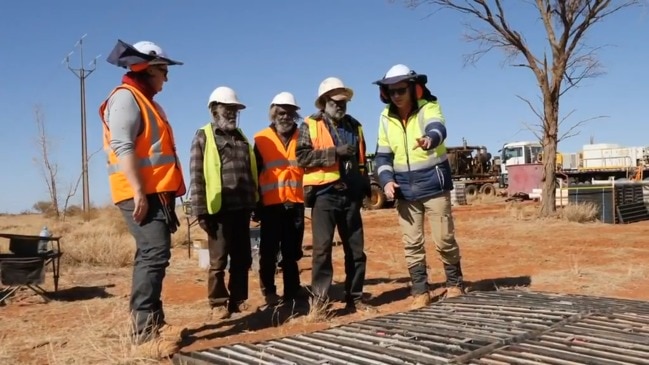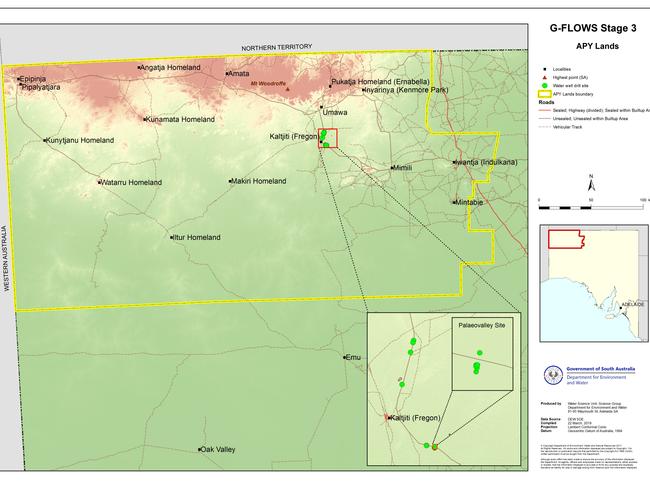Ancient water found in APY Lands may breathe life into SA outback
Ancient water gushing under the South Australian desert has been found with salinity levels low enough to support economic development for indigenous communities and pastoralists.

SA News
Don't miss out on the headlines from SA News. Followed categories will be added to My News.
Ancient water gushing under the South Australian desert has been found with salinity levels low enough to potentially support significant economic development for indigenous communities and pastoralists.
Researchers from the Goyder Institute for Water Research’s G-FLOWS project have drilled water up to 90m deep from ancient underground channels, called palaeovalleys, in the remote Anangu Pitjantjatjara Yankunytjatjara Lands in the state’s far north west.
A video released this month shows the researchers pumping out litres of water — probably millennia old.
Test results this week have dated mud samples from the palaeovalleys at being five to 10 million years old, when human ancestors first began to appear in Africa and birds and animals were evolving into their modern form.
One of wells drilled just outside Fregon has hit an ancient palaeovalley with better quality water and pressure located twice as deep as the groundwater system currently being used as the region’s principal water source.
So far 11 wells have been drilled across a 112sq km region.
Project leader and senior hydrologist at the Department for Environment and Water Adrian Costar said while the extent of the water found was not yet known, it was “significant because of its relatively high yields and low salinity”.

Mr Costar said water was a scarce commodity in the low rainfall areas of the state’s far north and little was known about the security of existing supplies.
“This untapped underground water resource is still being mapped, however early indications are that it could not only sustain the community’s ongoing water needs but have significant economic development potential for the region if developed sustainably.”
Technology not used before for mapping groundwater sources has created large subsurface scans now being used to chart the location of the ancient palaeovalleys beneath the APY Lands in an area known as the Musgrave Geological Province.
Groundwater depletion and pollution is one of the world’s most pressing environmental issues as the effects of climate change continue to be understood.
The project, now in its third stage, is expected to deliver a more detailed understanding of the underground water source and recommendations on how to use and preserve it for future needs and development later this year.
The project is a partnership between the Goyder Institute, the state government, CSIRO, and Flinders University.



